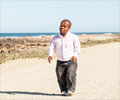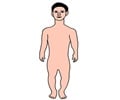A popular cable reality television show, Little People, Big World, focuses on the daily lives of short stature individuals. This series bring achondroplasia, the most common form of dwarfism, into the spotlight.
According to a literature review published in the April 2009 issue of the Journal of the American Academy of Orthopaedic Surgeons (JAAOS), treating patients with dwarfism is an extremely complex process. Orthopaedic surgeons and others caring for people with this disorder should be aware of its many manifestations.For example, limb lengthening treatments for those living with achondroplasia have been met with mixed results.
"Not only is limb lengthening a huge time commitment for the families involved, but children with achondroplasia are taken out of the environment where they play, interact and have fun to be placed in treatment for several years," said study co-author Michael C. Ain, MD, associate professor, Department of Orthopaedic Surgery and Neurosurgery, Johns Hopkins Hospital, Baltimore, Maryland.
"At the end of the day, these kids may be able to reach a higher shelf, but their level of physical activity in both athletic and sporting events may be very limited or not existent at all."
• Some studies have found that height can be gained with growth hormone injections, but the authors question whether the average height increase of six to eight centimeters is worth undergoing five years of daily injections. • Patients undergoing hormone injections see an initial increase in height, but once treatment stops, the height plateaus. These hormone injections may cause or accelerate symptoms of spinal stenosis. • Surgical treatments can produce greater increases in height, but also carry a much higher risk of complications.
The authors also found that early diagnosis and treatment of the manifestations of achondroplasia, sometimes even before they become symptomatic, may produce better outcomes for patients later in life. For example, some patients with achondroplasia have: • stenosis of the foramen magnum – a condition in which the hole in the base of the skull that allows the spinal cord to be connected to the brain, is too small. • This compresses the brain and cord, causing developmental delays and may even be fatal.
Advertisement
"With so many medical specialties involved, each needs to be aware of all of the symptoms of achondroplasia," stated study co-author Eric D. Shirley, MD, lieutenant commander, Medical Corps, United States Navy, and attending pediatric orthopaedic surgeon, Naval Medical Center Portsmouth, Portsmouth, VA. "Many of these conditions are interrelated."
Advertisement
"Quality of life is an important issue for people with achondroplasia," Shirley says. "This is why early and comprehensive treatment is so important."
Background on achondroplasia: • Globally, achondroplasia is the most common form of skeletal dysplasia occurring at a rate of 1 in 30,000 live births annually. • The condition is characterized by short stature along with several medical problems often related to the skeletal deformities. • Because these manifestations may become symptomatic during childhood or adulthood, people with achondroplasia are treated by orthopaedic surgeons at various stages of their lives. • Depending on the patient's individual symptoms, specialists in respiratory and neurological conditions may also provide treatment.
Source-Eurekalert
SRM









